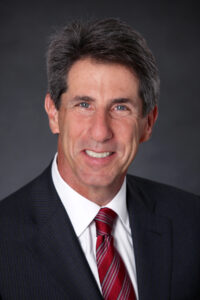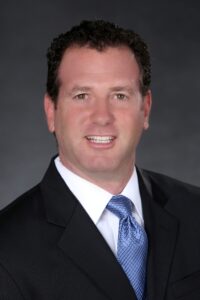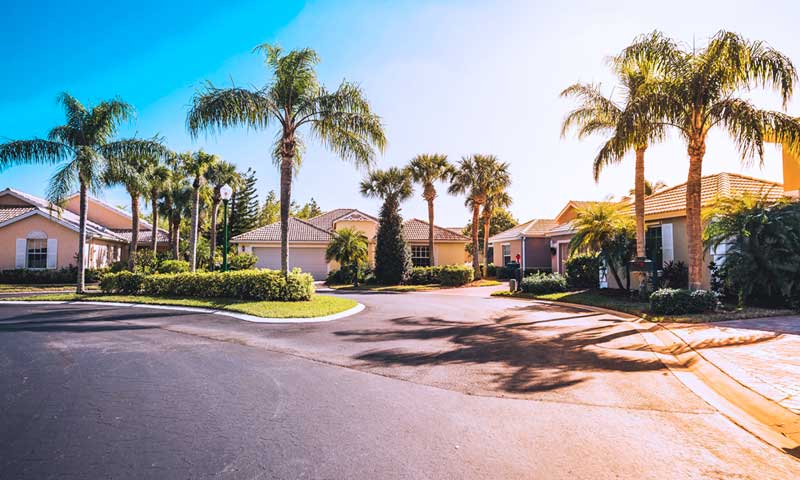BLOG
The collapse of the Champlain Towers South condominium has been a human tragedy of unimaginable proportions, and the unspeakable grief and horror of its aftermath have been shared deeply by our law firm.
Our firm’s community association law attorneys have made helping condominium communities to contend with construction defects a particular focus of our work. We believe reforms should be considered to require engineers to report certain serious conditions to local building departments wherever they find them. This would take discretion out of equation and immediately involve building inspections, permits being issued and repairs being completed. We also suggest there should be new federal/state government aid and/or low-interest federally backed loans for condominium associations that now engage in major structural repairs.
Our attorneys are also concerned by the great deal of misinformation that is currently circulating over the legal liabilities of association board members. We note that lawsuits against a condo association are ultimately against the building’s insurer and possibly all the unit owners, as the owners can be held responsible for their association’s liabilities. The firm’s attorneys have been reaching out to our clients to remind them of importance of prioritizing engineering findings in their turnovers to new board members and property managers, and to focus on structural issues over aesthetics and fund reserve accounts for any necessary repairs.
 Our firm’s attorneys have also been sharing their insights on these and other issues with major media outlets as well as some of Florida’s lawmakers and policymakers, and we have scheduled a free live webinar on 40-year recertifications and structural maintenance for today at 1 p.m. (click here for information and online registrations). The Sun Sentinel and Daily Business Review immediately turned to our board certified construction and condominium law experts for their input in the aftermath of the collapse. A front-page article in the Sun Sentinel that appeared in the Friday, June 25, edition titled “How to Know if Your Condo Tower is Safe” includes insights from firm partners Stuart Sobel (pictured here) and Roberto C. Blanch. The article reads:
Our firm’s attorneys have also been sharing their insights on these and other issues with major media outlets as well as some of Florida’s lawmakers and policymakers, and we have scheduled a free live webinar on 40-year recertifications and structural maintenance for today at 1 p.m. (click here for information and online registrations). The Sun Sentinel and Daily Business Review immediately turned to our board certified construction and condominium law experts for their input in the aftermath of the collapse. A front-page article in the Sun Sentinel that appeared in the Friday, June 25, edition titled “How to Know if Your Condo Tower is Safe” includes insights from firm partners Stuart Sobel (pictured here) and Roberto C. Blanch. The article reads:
. . . Stuart Sobel, a construction lawyer who also works at Siegfried Rivera, isn’t certain an inspection would have exposed the problem that led to the collapse in Surfside.
“Without knowing what caused this collapse it’s impossible to say if they had done the certification last year, or five years ago or 10 years ago, that it could have been avoided.” he said “We just don’t know how it came about.”
Can owners, buyers and tenants see the inspection results?
Once the inspection report is filed with the county, it becomes a public record, [Roberto] Blanch said. State condo law allows unit owners to obtain the reports from the association.
“A tenant or a prospective purchaser would be able to review that record as a member of the public,” he said. . .
. . . Blanch said those [40-year recertification] concerns could be alleviated if owners were “proactive” about troubleshooting problems and fixing them. . .
. . . Sobel said the inspections “should be significant comfort” for residents. “These buildings are designed to last 75 years or longer,” even the older ones.
“The overwhelming majority are perfectly safe,” Sobel said. “Unfortunately when something like this happens — it’s just inexplicable.”. . .
. . . Are buildings safer if they were built after Hurricane Andrew in 1992?
Sobel called Andrew a “paradigm shift.”
“The code improvements since Andrew are dramatic remarkable and effective,” he said, In the early 2000s, there were five hurricanes in one season and “one after the next caused no damage.”’
But the suggestion that pre-Andrew buildings are more likely to falter is not a given. Sobel said he lives in a home built in 1948 that has persevered through decades of storms .The home is “structurally strong and structurally sound.”
Click here to read the complete article in the daily newspaper’s website.
Stuart was also quoted extensively in an article that also appeared on June 25 in the online edition of the Daily Business Review, South Florida’s exclusive business daily and official court newspaper, and subsequently in the June 29 print edition of the newspaper. That article, which focuses on the first wrongful death lawsuit filed just a couple of days after the collapse, reads:
. . . Not everyone agrees the timing is right for a suit like this.
Construction attorney Stuart Sobel of Siegfried Rivera in Coral Gables says attorneys should slow down before rushing to file suit over a collapsed building. Sobel represented Miami Dade College in securing a $33.5 million settlement over the collapse of its parking garage while it was under construction at the school’s West Campus in 2012.
“You have a long statute of limitations. You don’t have to bring a lawsuit tomorrow. In my view, you’re doing it for publicity to get your name out there and get more business,” Sobel said. “At its core, you have a burden of proof. You can’t just point your finger at somebody. You have to be able to prove that that person did something wrong or failed to do something right. There’s just no ability for anybody filing suits today to say that that’s the case.”
Sobel noted engineers are able to forensically determine the cause of the failure and, instead, suggested letting insurance companies investigate first and make sure the claim is justified under the policy.
“They did it at the FIU pedestrian bridge that collapsed, Miami Dade College garage that collapsed, and they’ll do it here,” Sobel said. “We will figure it out, but that’s going to take time.”
Sobel lives 10 blocks away from Champlain Tower South and said his heart goes out to his neighbors and the first responders who have worked tirelessly to rescue survivors and recover victims.
“Their heroism is just inspiring,” Sobel said. “You watch normal people doing what they’re doing, risking their lives without any recognition and any extra rewards. It’s just remarkable to me. You see it in the papers and on the TV, but when you see it in your own community it just moves me.”
Make repairs ASAP
Thursday’s catastrophe shows it’s crucial for condo associations to take the 40-year recertification process seriously, according to Sobel, who suggests making changes as soon as an engineer comes back with recommendations. Sobel said it might also be in an association’s best interest to do a self-assessment.“The fact that the law requires it after 40 years does not prevent a condominium association from self-assessing and making sure the building is safe,” Sobel said. “Are there cracks that either merit investigation or are worrisome? If there are, don’t ignore them. I live in a single-family home. It should be no different.”
There could be some tweaks to the certification process, according to Sobel, who noted that after Hurricane Andrew, building codes were changed dramatically to withstand more damage and ensure better safety for people.
“It changed everything. Roofs had to be tied down much more strongly, and construction was much more closely watched. As a result, the buildings have been much safer. That was in 1992,” Sobel said. “I would expect that the same type of study of the 40-year certification and perhaps modifications of that will occur as a result of this collapse.”
That said, this event is not something that everybody on a high-rise near the beach is going to have to worry about, in Sobel’s view, since 40-year inspections are generally effective.
“This doesn’t normally happen. This is extraordinarily rare,” Sobel said. “It wasn’t an explosion, there was no trauma to the building, no lightning strike. You read about the possibility of spalling and the exposure of the building to the salt air. Well, that’s all gradual, but it’s not going to explain the sudden collapse of a 12-story building.”
It could take years to uncover what actually went wrong, in Sobel’s experience. . .
Click here to read the complete article in the Daily Business Review‘s website (registration required).
 The following week on Wednesday, June 30, the Daily Business Review featured an article in its online edition titled “Are Homeowners Associations the Bad Guy or ‘Ill-Equipped’ Volunteers?”, and it quotes the firm’s Gary Mars extensively:
The following week on Wednesday, June 30, the Daily Business Review featured an article in its online edition titled “Are Homeowners Associations the Bad Guy or ‘Ill-Equipped’ Volunteers?”, and it quotes the firm’s Gary Mars extensively:
. . . Attorney Gary Mars of the Siegfried Rivera law firm in Coral Gables is board certified as an expert in condo and community association law, and has helped associations contend with contractors and engineers over construction defaults. Although Mars said he respects the people who are filing the lawsuits, he agrees it’s too soon to tell who is at fault.
Mars says the condominium association board members, who are mostly volunteers, need to know their buildings. He says he will often ask sitting managers about their historical reporting, only to find they have no idea what kind of information that entails. But it’s information that could give a lot of insight into the health of a structure.
“There should be engineering evaluations that have occurred over time … They’ve been shelved and they’re not being looked at, but they’re a great snapshot as to the history of the property and, as things continue on through the lifespan of the property, you build off of that just like you would medical records for somebody’s person,” Mars said. “That doesn’t happen most of the time. You replace managers, you replace board members in condos, and there’s really not a great source from a historical standpoint moving information to the current decision-makers.”
One challenge a lot of associations face is balancing the needs of the condominium from a financial standpoint. At Champlain Towers South, many condo owners had just paid special assessment fees to begin building repairs.
“A modest building with big financial needs is really in a dilemma,” Mars said. “How do we raise the capital to do the repairs? Sometimes the repairs can be in the millions of dollars and you have very modest unit ownership in regards to income levels. How do you balance that all out?”
There isn’t a great solution, according to Mars, but if possible, retaining a large reserve amount can help cover the cost of essential repairs.
“That may be an area where legislation may have some impact,” Mars said. “There may be some abilities to have different types of loans available that may have some type of government backing that could provide some of these associations with the opportunity of acquiring funds to do this type of extensive, deferred maintenance.”
Did the board drop the ball?
Since board members often have to rely on reports and do their own decision making, Mars said that can sometimes lead to mistakes when they interpret what they should and shouldn’t do when evaluating building conditions, their options and how to timely address issues.While Mars said he isn’t sure if that’s the case here, he suggested taking some of that discretion away from board members and giving it to municipalities instead.
“So the engineers that would be retained may have to work with a municipality on certain issues and there should be time frames built in for the work to be performed,” Mars said. “I think that may be another way so we’re not in a period where the building is aging and we now look at a 40-year period and there’s been little-to-no work done, and the situation is much more drastic than if there were some incremental repairs being performed throughout the course of the building’s aging.” . . .
Click here to read this complete article in the newspaper’s website (registration required).
Our firm salutes Stuart, Roberto and Gary for sharing their insights with the readers of these major South Florida newspapers.
In the weeks and months to come, our firm’s community association attorneys will continue their work with our clients as well as our outreach to state and local lawmakers and policymakers to share their insights and recommendations. We also encourage everyone to consider supporting the Support Surfside fund, which is a collaboration involving the Coral Gables Community Foundation, the Key Biscayne Community Foundation, the Knight Foundation, the Miami Foundation, the National Basketball Association’s Miami Heat, and the Miami Heat Charitable Fund. Click here to visit its website and learn more.

